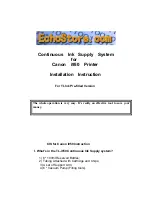
© SICK AG • Presence Detection • Subject to change without notice • 8015887 23
Operating instructions Register sensors RS25
Mounting
30°
Transmitte
r
Receiver
Fig. 8: Assembly optical sensor head for diffuse marks and diffuse background
Assembly optical sensor head
for glossy marks and glossy
background
Almost all the transmitter light is reflected in the reflective direction by a
glossy background. Most of the light is reflected directly into the transmitter
in a placement according to figure Fig. 8. Only a very small part of the light
that is scattered to the side would reach the receiver and be detected by it.
For glossy marks or a glossy background the optical sensor head should be
inclined as compared to the surface. The optical sensor head may be tilted
in its longitudinal or lateral axis. There are advantages and disadvantages
to either placement.
Tilt in the longitudinal axis
The optical sensor head is tilted around its longitudinal axis by 15°.
• Advantage: A relatively large share of the reflected light, also that reflect-
ed by the background, reaches the receiver (may be saturated).
• Disadvantage: The distance between the transmitter and the back-
ground differs from the distance between the receiver and the back-
ground. Due to the low depth of field, the optical sensor head is difficult
to install at the correct distance.
30°
Transmitte
r
Receiver
Fig. 9: Optical sensor head tilted longitudinally, assembly version
at glossy marks and a glossy background
















































